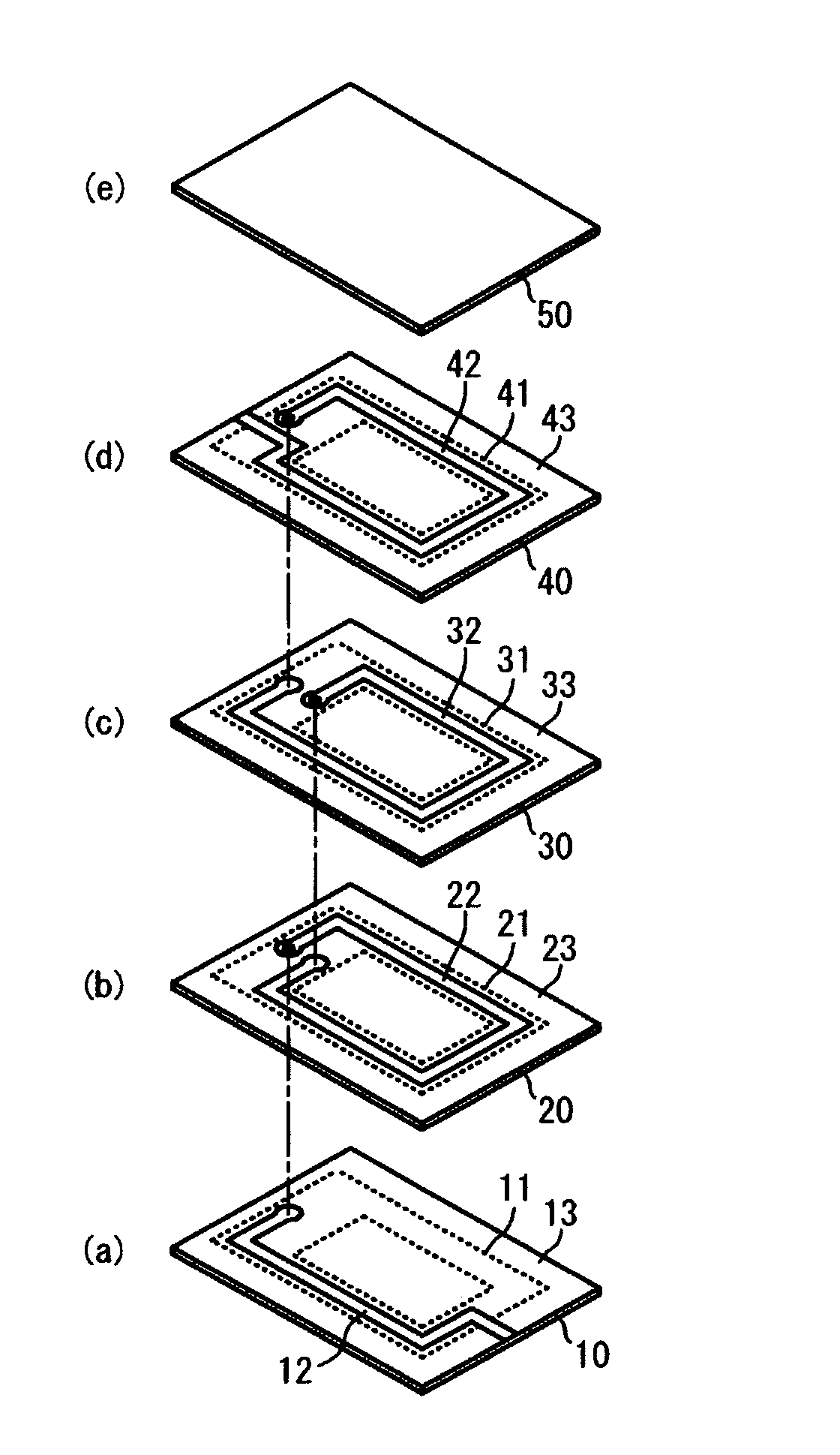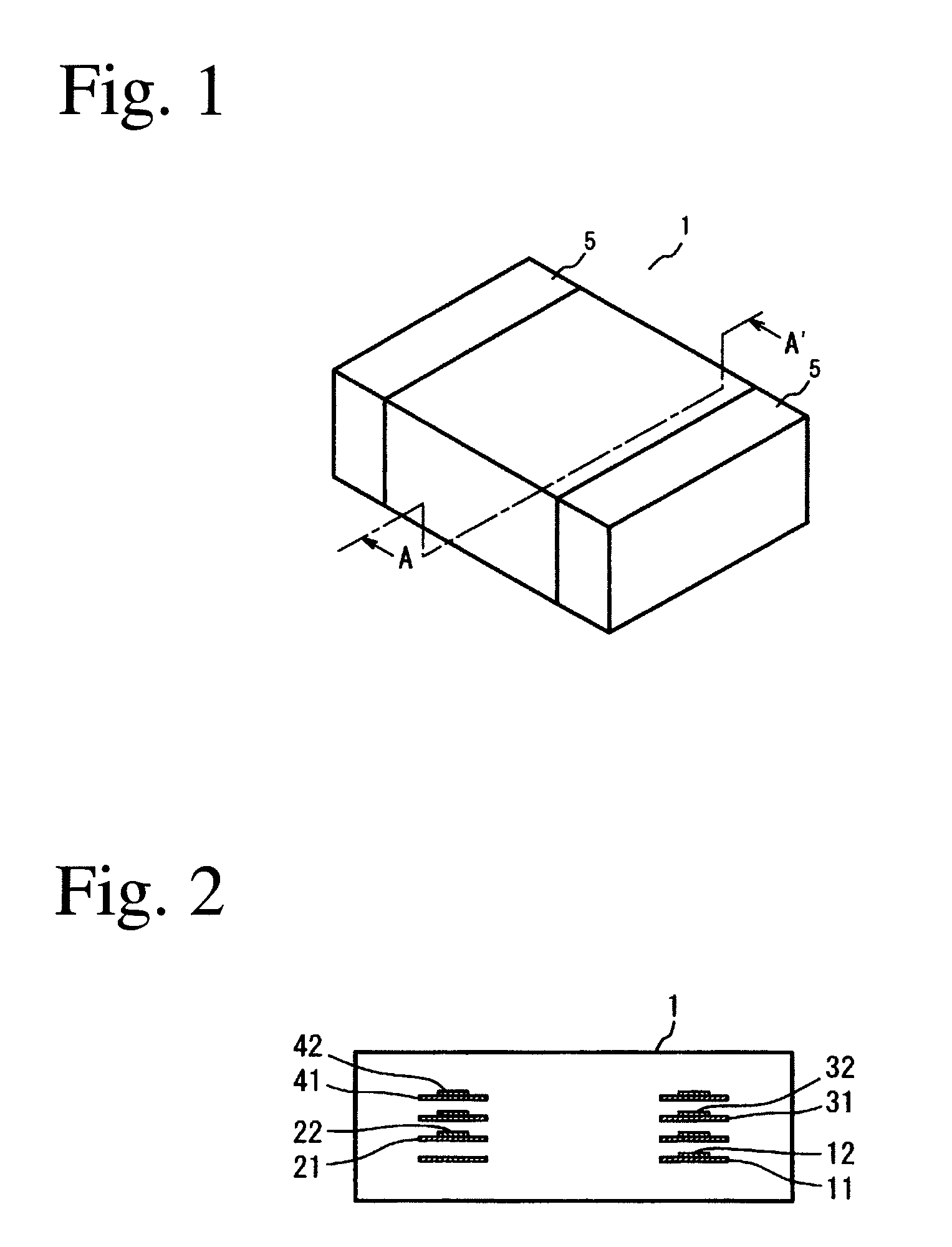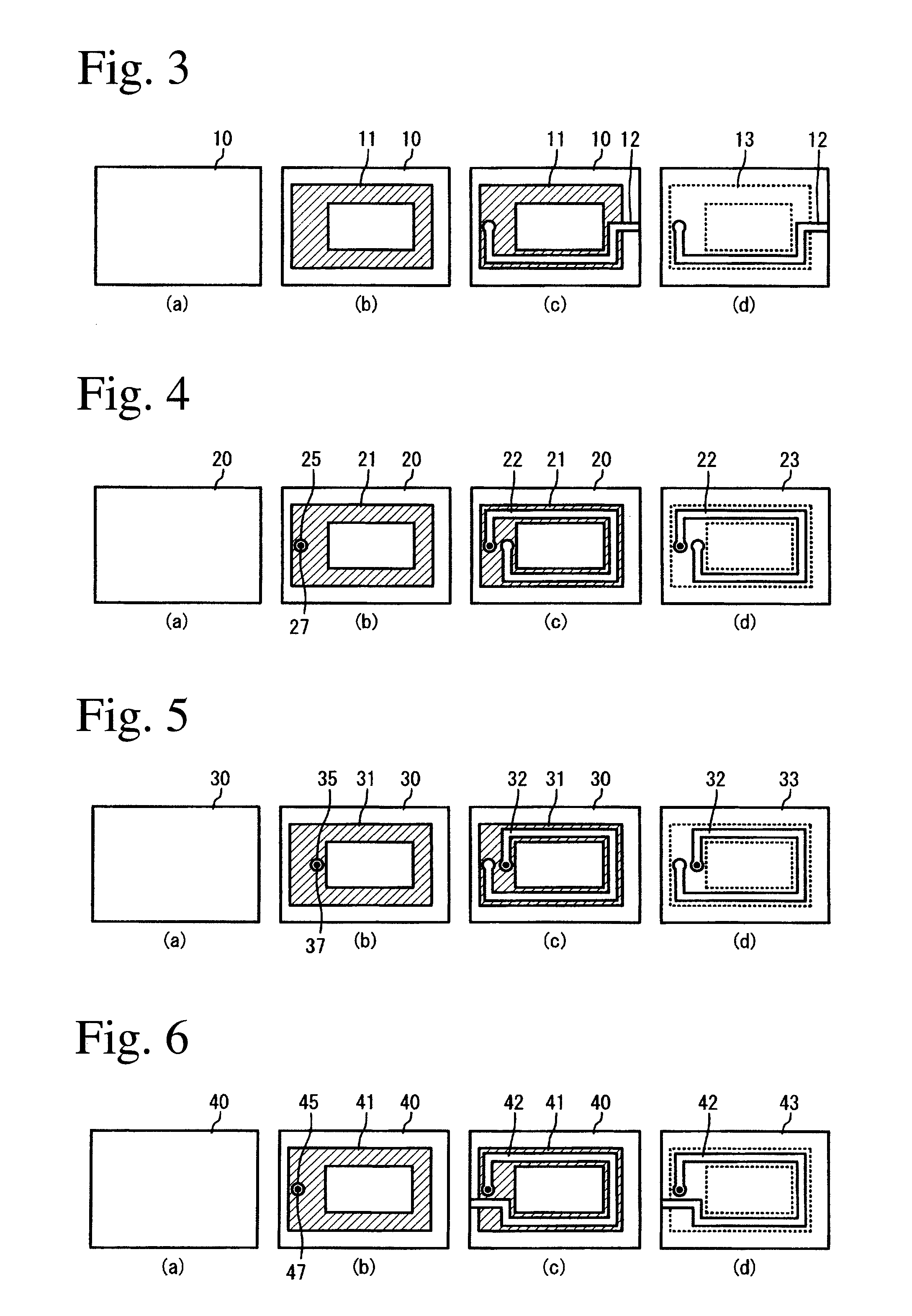Laminated device
a laminated inductors and laminate technology, applied in the direction of magnetic materials, inductances, magnetic bodies, etc., can solve the problems of unsuitable lamination, low electric resistance, and several problems of laminated inductors, and achieve excellent dc superposition characteristics, stable characteristics, and reduced internal-electrode-induced residual stress
- Summary
- Abstract
- Description
- Claims
- Application Information
AI Technical Summary
Benefits of technology
Problems solved by technology
Method used
Image
Examples
first embodiment
[1] First Embodiment
[0057]FIG. 1 shows the appearance of the laminated inductor according to the first embodiment of the present invention, FIG. 2 is a cross-sectional view taken along the line A-A′ in FIG. 1, and FIGS. 3-7 show its production steps. The laminated inductor in this embodiment comprises a coil embedded in a ferrite laminate, both ends of the coil being connected to external electrodes 5 formed on a laminate surface by baking a conductive paste of Ag, etc. As shown in FIG. 2, non-magnetic ceramic layers 11, 21, 31, 41 are in contact with coil-constituting conductor patterns 12, 22, 32, 42. The conductive paste for forming external electrodes is not particularly restricted, but may be, for instance, an Ag alloy containing at least one of Pt, Pd, Au, Cu and Ni, etc.
[0058]The magnetic ferrite layer is made of, for instance, a ferrite composition comprising Fe2O3, ZnO and NiO, part of which may be substituted by CuO, as main components. The main component composition prefe...
second embodiment
[2] Second Embodiment
[0078]FIG. 8 shows the cross section (corresponding to the cross section taken along the line A-A′ in FIG. 1) of the laminated inductor in the second embodiment, and FIGS. 9 to 18 show its production steps. Because the laminated inductor in the second embodiment has the same portions as in the first embodiment, only different portions will be explained in detail below.
[0079]In the laminated inductor in this embodiment, non-magnetic ceramic layers 101, 121, 141, 161, 181 are formed between coil-constituting conductor patterns 112, 132, 152, 172. The conductor patterns 112, 132, 152, 172 and the non-magnetic ceramic layers 101, 121, 141, 161, 181 are formed on different magnetic ferrite sheets 100, 110, 120, 130, 140, 150, 160, 170, 180. The conductor patterns are connected through via-holes 127, 137, 147, 157, 167, 177 formed in the magnetic ferrite sheets 120, 140, 160 each provided with a non-magnetic ceramic layer, and in the magnetic ferrite sheets 130, 150, ...
third embodiment
[3] Third Embodiment
[0082]FIG. 19 shows the cross section (corresponding to the cross section taken along the line A-A′ in FIG. 1) of the laminated inductor in the third embodiment, and FIG. 20 shows its production steps. In this embodiment, the non-magnetic ceramic layers are formed on an entire coil-covering region (including a region inside the coil). Because the non-magnetic ceramic layers act as magnetic gaps for a magnetic flux in a region inside the coil, the DC superposition characteristics are improved, resulting in high inductance at high frequencies. With respect to other points, the laminated inductor in this embodiment does not differ from that in the first embodiment.
PUM
| Property | Measurement | Unit |
|---|---|---|
| BET specific surface area | aaaaa | aaaaa |
| thickness | aaaaa | aaaaa |
| BET specific surface area | aaaaa | aaaaa |
Abstract
Description
Claims
Application Information
 Login to View More
Login to View More - R&D
- Intellectual Property
- Life Sciences
- Materials
- Tech Scout
- Unparalleled Data Quality
- Higher Quality Content
- 60% Fewer Hallucinations
Browse by: Latest US Patents, China's latest patents, Technical Efficacy Thesaurus, Application Domain, Technology Topic, Popular Technical Reports.
© 2025 PatSnap. All rights reserved.Legal|Privacy policy|Modern Slavery Act Transparency Statement|Sitemap|About US| Contact US: help@patsnap.com



